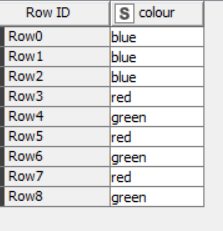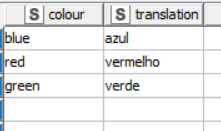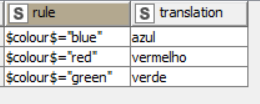hi @jarviscampbell
@elsamuel suggested a simple and clear expression. If you prefer to use Knime nodes you have (AFAIK) two ways
Let’s say your data table is like this one

-
the Joiner node
Create a table like this one

and join it to your data table on the “colour” column -
the “Rule engine (Dictionary)” node.
Create another table with the rules

and apply the rules to the data table
In this workflow you find these two solutions
KNIME_project7.knwf (13.2 KB)